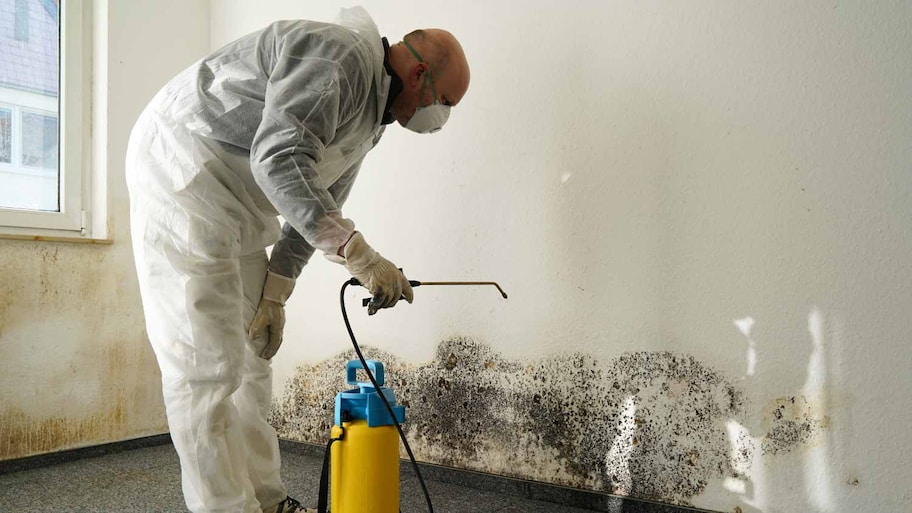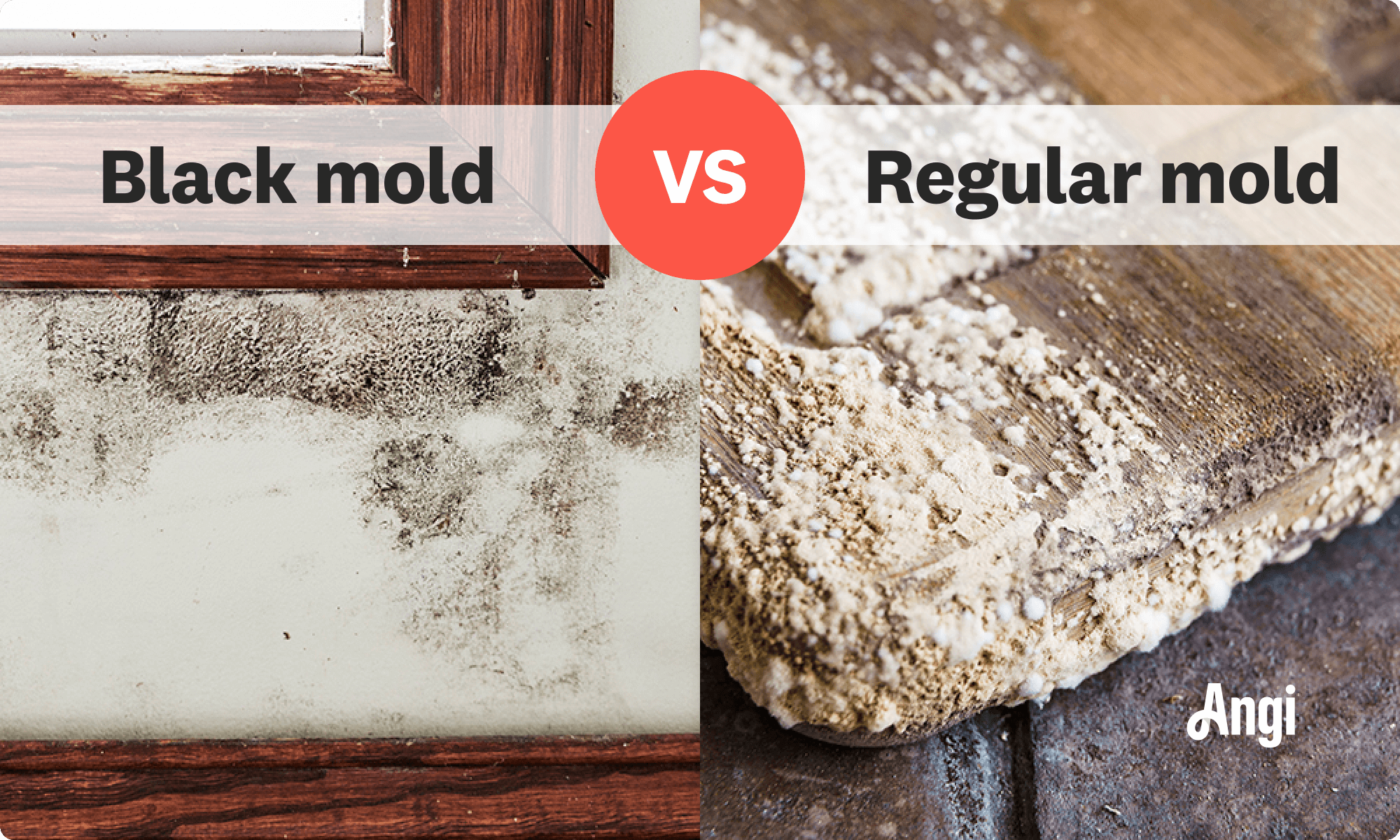What’s the Difference Between Black Mold and Regular Mold?
When you find mold, knowing what type it is can help you determine next steps


Highlights
Black mold is toxic mold, but not all toxic mold is black mold.
Black mold can be wet and slimy, whereas regular mold is dryer.
Any type of mold in your home can lead to health concerns.
Mold growth in homes is a common issue, but not all molds are created equal. Among the various types, black mold, scientifically known as Stachybotrys chartarum, often evokes fear due to its potential health risks. However, it's crucial to demystify the differences between black mold and regular mold to make informed decisions about our homes and health.
In this comprehensive article, we will delve into the intricate world of black mold vs regular mold, exploring the unique characteristics that set black mold apart from its regular counterparts. By understanding their distinctions, you can identify, address, and prevent mold issues more effectively.
What Are the Differences Between Black Mold and Regular Mold?
Mold is a type of fungus that thrives in moist environments, and it can come in various colors, including black. While the term "black mold" often causes concern due to its potential health risks, it's essential to understand that not all molds with a black appearance are the infamous black mold. Here are the key differences between black mold and regular mold summarized:
| Type of Difference | Black Mold | Regular Mold |
|---|---|---|
| Color | Dark greenish-black | Various colors |
| Toxicity | Produces mycotoxins | Allergenic/pathogenic |
| Prevalence | Less common | More common |
| Health Risks | Respiratory issues | Allergic reactions |
| Habitat | Water-damaged areas | Damp environments |
| Texture | Slimy and wet | Dry and powdery |
Black Mold vs Regular Mold: Differences in Appearance

Mold comes in various types, each with distinct characteristics. Understanding the differences between black mold and regular mold in terms of appearance is essential for identification and determining appropriate steps for remediation. Now let’s take a much closer look at how regular mold vs black mold differ.
Color
One primary distinguishing factor between mold types lies in their color, often the first sign homeowners notice, prompting further investigation into the type of mold infestation they might be dealing with. What does black mold look like? Black mold is notorious for its dark greenish-black hue, sparking concerns due to its potential health risks. Its color, though not exclusive, sets it apart from regular molds that exhibit a spectrum of colors, including green, gray, brown, or black.
Toxicity
If you found black mold in your home, you’re likely anxiously wondering, is black mold toxic? Black mold is particularly concerning due to its potential mycotoxin production. Mycotoxins are toxic substances released by certain molds, and Stachybotrys chartarum is known to produce them under specific conditions. Exposure to these mycotoxins can lead to severe health issues, including respiratory problems, skin irritation, fatigue, and headaches. Because black mold causes such serious threats, it’s always a good idea to hire a professional black mold inspector near you to investigate the issue seriously. Mold remediation costs can vary by provider, so it’s always a good idea to request service quotes from a handful of local companies.
Regular mold, encompassing various species appearing in different colors, can also produce mycotoxins, albeit less commonly than Stachybotrys chartarum. The toxicity of regular mold depends on the specific species and the mycotoxins they release. While not all regular molds are highly toxic, they can still cause allergic reactions and respiratory problems, especially in individuals with mold sensitivities. Therefore, any mold infestation, regardless of type or color, should be taken seriously, and professional remediation is recommended to ensure a safe living environment.
Prevalence
Prevalence also distinguishes these molds significantly. Black mold, while less common, is typically found in water-damaged buildings, thriving in environments with excessive moisture. Its presence often indicates chronic water damage, necessitating immediate attention. Regular molds, in contrast, are more prevalent, flourishing in damp environments commonly found in bathrooms, kitchens, and basements.
Health Risks
Health risks associated with black mold underscore the urgency in addressing its presence. Exposure to black mold spores can lead to various health issues, including respiratory problems, skin irritation, fatigue, and headaches. These symptoms can be especially problematic for individuals with mold allergies or compromised immune systems. Regular molds, while less toxic, can still cause allergic reactions and respiratory problems. Therefore, regardless of the mold type, prompt remediation and preventive actions are crucial for maintaining a healthy indoor environment.
Habitat
The habitat preference of these molds provides additional insight. Black mold thrives in extremely damp, water-damaged areas, often displaying a slimy, greenish-black appearance. Its penchant for such environments indicates long-standing water issues, necessitating thorough inspection and repairs to prevent recurrence. Regular molds, displaying various textures from fuzzy to powdery, typically grow on organic materials like wood or paper, flourishing in consistently damp conditions.
Texture
Black mold often appears slimy or wet in texture. Its characteristic sliminess can set it apart from other molds, which might have a different, dryer texture. Regular molds vary widely in appearance, presenting different textures such as fuzzy, velvety, or powdery, and can appear in various colors. Recognizing these visual disparities is pivotal for homeowners, guiding them in early detection and appropriate remediation efforts.
Frequently Asked Questions
Not all molds are inherently harmful, but their presence can lead to health issues, especially for individuals with allergies or respiratory problems. Black mold often garners attention due to its potential toxicity. However, other molds can cause health concerns too. Regular mold, appearing in various colors like green, gray, brown, or black, can trigger allergies and respiratory problems. Prompt removal and prevention measures are essential, regardless of mold type, to maintain a healthy indoor environment.
It is not advisable to stay in a house with black mold. Exposure to black mold, or any mold, can lead to health problems, especially for vulnerable individuals such as children, the elderly, or those with weakened immune systems. Black mold produces mycotoxins, which can cause respiratory issues, skin irritation, fatigue, and headaches. If black mold is detected, it is crucial to evacuate the premises, seek professional help for remediation, and only return once the area is thoroughly cleaned and confirmed mold-free by experts.
Toxic mold doesn't have a specific color; instead, toxicity depends on the type of mold and the mycotoxins it produces. Stachybotrys chartarum (also known as black mold) is notorious for its potential toxicity. However, not all molds appearing black are Stachybotrys chartarum. Mold species that appear in various colors, such as green, gray, brown, or black, can also produce mycotoxins. Therefore, it's essential to focus on identifying the type of mold through professional testing rather than relying solely on color to determine its toxicity.
